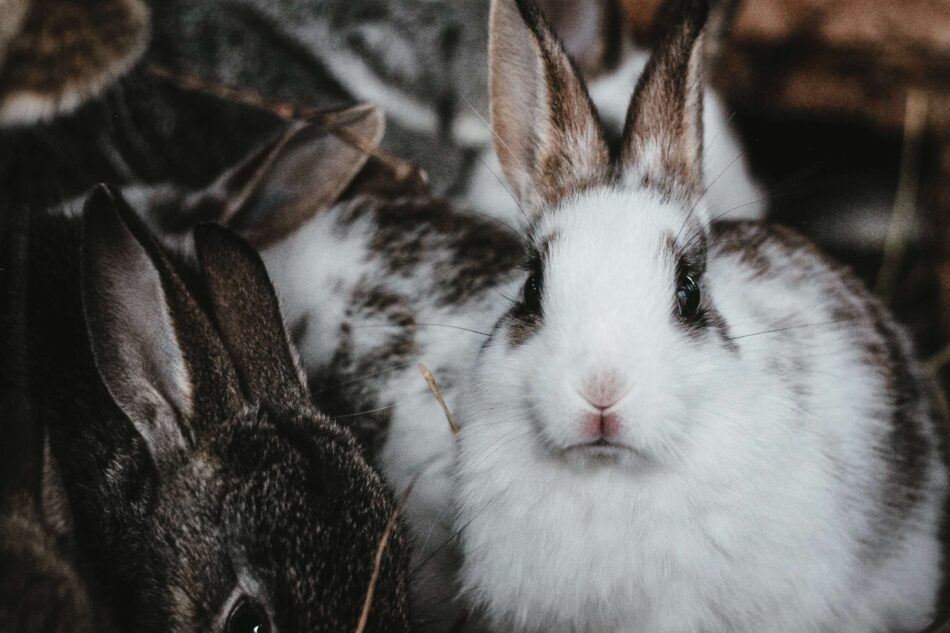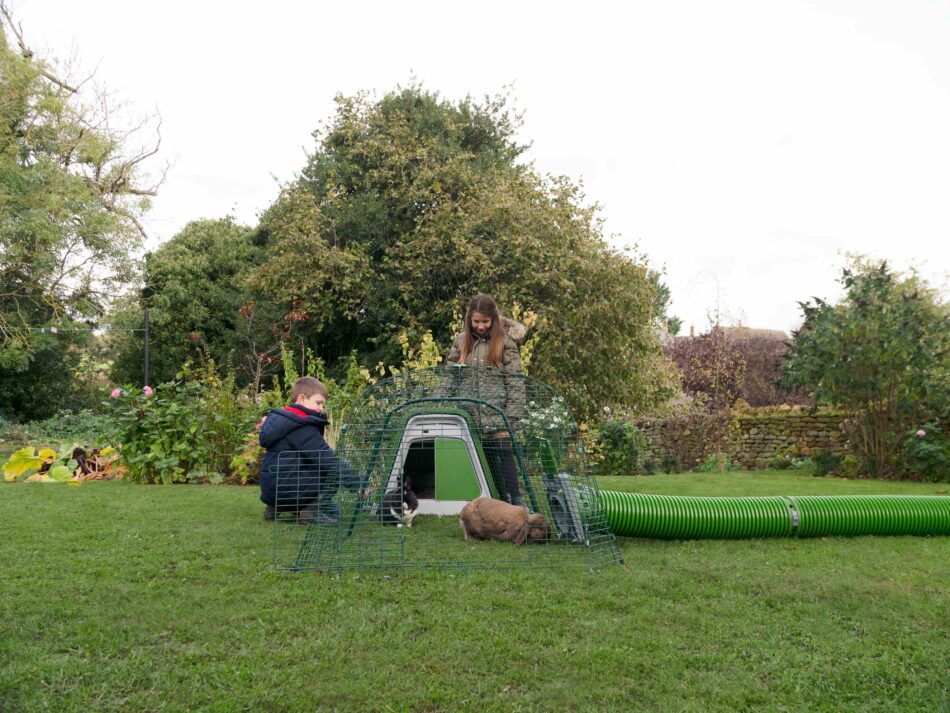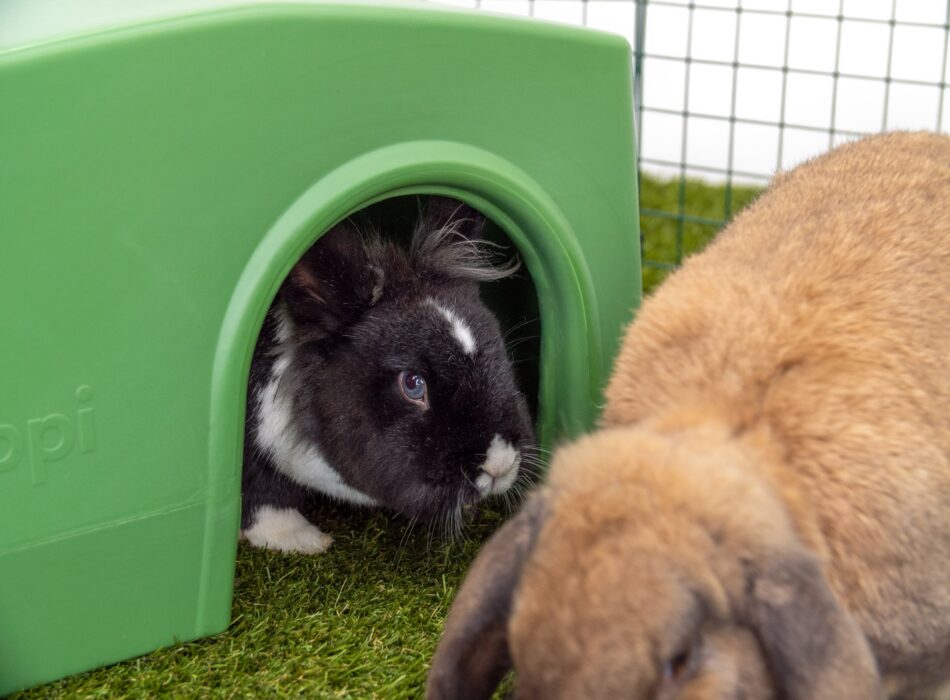How to Prepare Your Rabbit for Extreme Winter Weather
Winter is highly anticipated by some, and a source of apprehension for others. Depending on where you live, your outdoor rabbit could fall into either category! Rabbits that live in states that experience long, hot summers look forward to winter with glee. The good news is that rabbits are naturally able to handle the cold better than excessive heat, and with a helping hand from their human, they’ll be ready to withstand the cold winter months.
Your pet rabbit’s wild counterparts have multiple ways of managing their wellbeing in the cold. For instance, rabbits have a burrowing instinct, as the underground is more insulated and temperature-regulated than the outside air and at the mercy of the weather. But since burrowing down in the ground all winter isn’t an option for most domesticated rabbits, we’ve created rabbit hutches and accessories at Omlet to simulate the ideal conditions for your rabbit to withstand wild weather of all varieties!
With a few minor adjustments to your rabbit’s diet and routine, along with products designed by Omlet to keep the weather out and the warmth in, your rabbit can spend the winter months in their element – safe from the elements!
Cold-natured
Rabbits have dense coats that insulate them from both heat and cold. In the summertime, you’ll notice your rabbit “blowing” their coat frequently in an effort to release their dense undercoat in favour of the longer “guard hairs” on top. As the days shorten and grow colder, outdoor rabbits will shed less and grow out their insulating undercoat once again in preparation for winter. You’ll notice your bunny looking particularly poofy by the time cold weather sets in!
Once they’ve donned their winter coats (courtesy of nature!), bunnies are right at home in the cold! Like their wild counterparts, most pet rabbits will appear more energetic and playful in the colder months. But their increased activity isn’t just out of joy for the season – it’s also to create more energy and heat to warm themselves up. Nevertheless, it’s fun to watch pet rabbits increase their body temperatures through zoomies, hopping, binkies, and social play!
Multiple factors such as breed, size, housing conditions, and age need to be taken into consideration when determining how cold is too cold for your rabbit. As a general rule, most rabbits should be comfortable in temperatures above freezing. Once the weather hits 32℉, it’s time to evaluate how your bunny is faring.
For more frequently asked questions regarding keeping your pet rabbit outside during the winter, visit: Will My Rabbits Be Ok Outside in the Winter?
Blizzards and bunnies
Rabbits don’t mind a little snow, but if you’re in an area that experiences hard frosts and blizzard conditions, you’ll need to bolster your bunny’s shelter!
One of the best ways to keep your outdoor rabbit warm is to mimic their natural tactics in the wild. Bunnies burrow, nest, and huddle together for warmth – all of which you can recreate for your pet rabbit. Insulation, both in the wild and in your backyard, is a rabbit’s best friend in the cold.
Think of your rabbit’s hutch as their burrow. At Omlet, we’ve invented all of our rabbit products to maintain ideal temperatures and conditions for rabbits – just like they seek out in the wild. By selecting a well designed home for your bunny, such as the Eglu Go Rabbit Hutch, they will have an insulated hideaway from the cold that provides ample ventilation without sacrificing warmth. But unlike a bunny-engineered burrow, the Eglu Go Rabbit Hutch is waterproof and predator-resistant for when critters come lurking.
For frigid cold snaps, an Extreme Temperature Blanket is an excellent added layer of insulation for your rabbit’s hutch. Like any good insulation, the material won’t become waterlogged when the snow begins to melt, and traps extra heat underneath to further warm the hutch.

Wild winter weather
The winter season is unpredictable at best, and downright wild at its worst! Cold fronts can come out of nowhere, bringing temperature drops and heavy sleet or snow.
Rabbits, being the intuitive and sensitive animals that they are, can sense when a storm is coming. They can sense atmospheric pressure changes, which will drive them to seek shelter and hunker down. When seeking shelter, rabbits will choose the closest cover available. By placing a few Zippi Rabbit Shelters in their run, you can make sure your rabbit has ample opportunity to escape from the elements.
But you can also create a silver-lining to those winter storm clouds by creating a winter wonderland play-scape for your bunnies! By using a combination of Zippi Rabbit Tunnels, Zippi Rabbit Platforms, and Zippi Rabbit Shelters, you can design a winter-friendly playground that will make your bunny binky with joy!
Health and dietary considerations for winter
Rabbits need different care in the cold months vs the warmer months. You’ll want to inspect your rabbit’s coat before the first cold snap of the season. Check to make sure their undercoat is thick and healthy, and that they don’t have any patches where their hair has not grown in fully (rabbits may have bare or thinned patches of fur from rubbing, playing with each other, or from nervous grooming habits).
Make sure all water bottles or crocks are either insulated or heated to prevent freezing. Heating water on the stove or in the microwave several times a day to add to your rabbit’s watering device is another way of keeping their water thawed and palatable.
Rabbits also ramp up their metabolisms in the winter, and they’ll need more calories to support and maintain their increase in body temperature. They may pass on a hot cup of tea or cocoa, but your rabbit will thank you for extra hay and hay-based pellets during cold weather! You can give treats as usual, but additional treats aren’t necessary. Thanks to their unique digestive system, rabbits benefit the most from foods high in fibre – the longer it takes to digest, the more heat gets generated. Timothy hay, orchard grass, oat hay, and meadow hay are all energy-lending options that should be available at all times to your rabbit. Pelleted feed made primarily from hay should be free-fed as well. If you’re feeding your rabbit a blend (feed that has coloured pellets, cracked corn, or seeds) once or twice a day, you’ll want to transition to feeding a pellet feed before the winter. You can save their blended feed for a special treat to be given in small amounts a few times a week!
It’s important to remember that rabbits do not hibernate. In fact, they become even more active during the colder months! If you notice your rabbit acting lethargic or sluggish, bring them inside and contact your veterinarian. An underactive bunny in the winter is either too cold, or will become too cold very quickly!
It’s all in the design
Preparation is the best method for caring for your rabbit in the cold months. But wouldn’t it be nice to have rabbit-housing solutions that work not only in the cold, but also in the heat?
We don’t want you to have to swap out setups every time the seasons change! That’s why we’ve invented one-product-suits-all solutions for caring for and enjoying your pets.
The Eglu Go Rabbit Hutch was designed to keep your rabbit’s thermostat at an even level all year long. And, with an added Extreme Temperature Blanket, you’ll give your bunny the highest level of comfort possible to not only endure the winter months, but to enjoy them!
And don’t forget that while creating a happy winter-home is important for your rabbit, playtime doesn’t have to fall to the wayside just because it’s chilly! An Outdoor Rabbit Run gives you plenty of space to create a fun playground for your rabbit that you can walk in and enjoy with them!
No matter where you spend your winter, Omlet is here to help you and your rabbit enjoy this season together. Whatever the weather – from temperate to frigid- we’ve thought up the products to cover your rabbit from every angle!
This entry was posted in Rabbits

